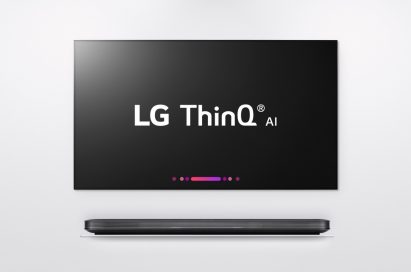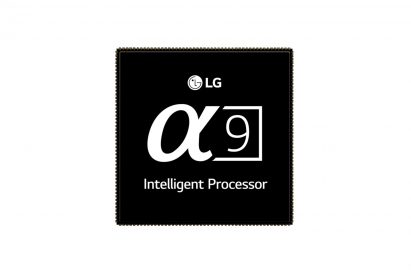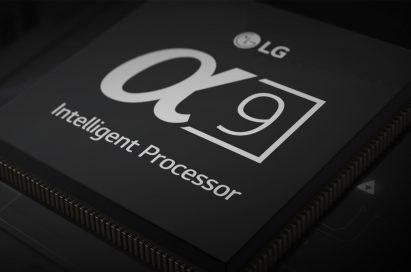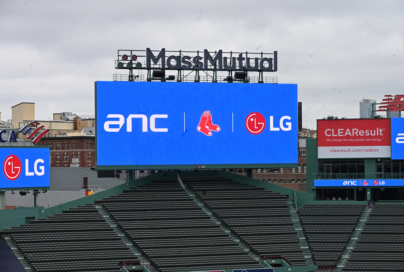LG LAYS GROUNDWORK FOR TV OF TOMORROW WITH THINQ® AND α (ALPHA) PROCESSOR
Already Delivering Category-Leading OLED TV and Impressive SUPER UHD TV,
LG Focuses on the Brains Behind the Display
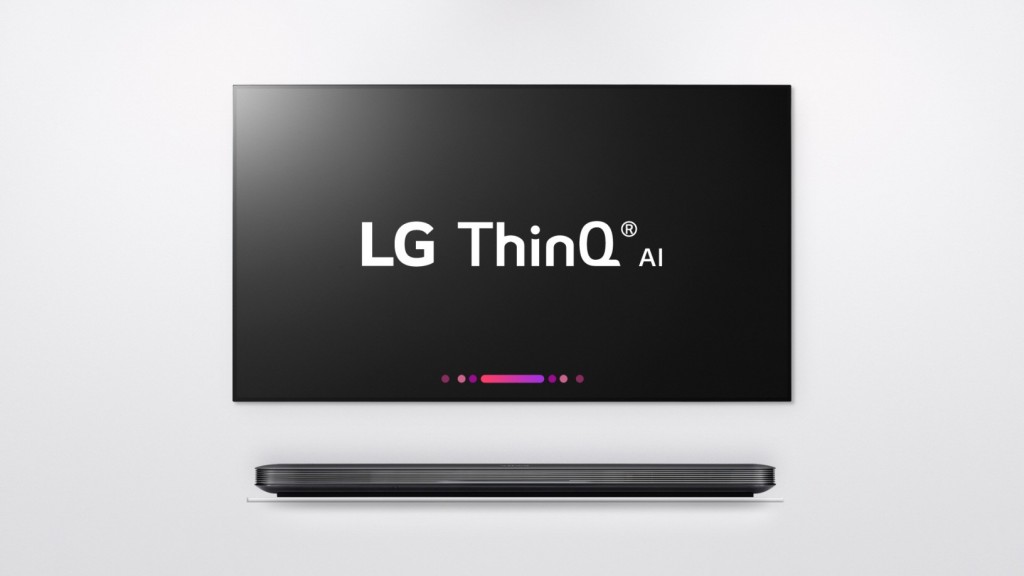
SEOUL, Jan. 3, 2018 — At CES 2018, LG Electronics (LG) will raise the home entertainment experience to another level with the introduction of ThinQ® artificial intelligence (AI) and an advanced image processor in its newest OLED and SUPER UHD TVs. ThinQ allows the implementation of hundreds of voice requests utilizing the company’s own open smart platform as well as third-party AI services.
With AI functionality embedded in their TVs, LG customers can speak directly into the remote control to enjoy all the convenient features of today’s advanced voice assistant technology. LG’s ThinQ TVs also function as smart home hubs, offering access to other smart home products such as robotic vacuum cleaners, air conditioners, air purifiers, smart lights, smart speakers and many other devices that can connect to the TV via Wi-Fi or Bluetooth.
And with LG’s newest α (Alpha) 9 processor powering the company’s market-leading OLED TVs, viewers will experience further improvements in what many already consider to be the best TV picture quality. LG Nano CellTM SUPER UHD TVs employ Full-Array Local Dimming (FALD) backlighting to provide deeper blacks and enhanced colors, as well as nuanced shadow details for lifelike images.
Transforming Modern Lifestyle Through Intelligence
LG’s ThinQ offers an enhanced interactive experience in the company’s newest smart TV lineup, including OLED and SUPER UHD TV models by employing Natural Language Processing (NLP) to deliver intelligent voice-activated control and connectivity based on LG’s own deep learning technology, DeepThinQ. With a dramatically streamlined setup process, viewers can easily and quickly connect to gaming consoles and external soundbars. Users can search for information, images or videos featuring specific content by making a verbal request through the TV’s remote control such as “show me all the movies this actor has starred in” or “show me yoga videos”.
LG TVs with ThinQ AI supports services based on Electronic Program Guide (EPG) to deliver information in real time or change to a channel that offers the content requested. Instruct the TV to “search for the soundtrack of this movie” or “turn off the TV when this program is over” without repeating the name of the program or entering a specific time. What’s more, customers in certain countries will be able to utilize the Google Assistant to control smart home devices such as lights or activate third-party services.
Picture Quality Close to Perfection
LG’s newest α (Alpha) 9 intelligent processor provides true-to-life images with incredibly rich colors, sharpness and depth for more realism. A core innovative element of the α (Alpha) 9 is the four-step process of noise reduction, which boasts twice as many steps compared to conventional techniques. This algorithm allows for greater finesse in noise reduction, improving the clarity of images affected by distracting artifacts and enabling more effective rendering of smooth gradations.
The processor also improves color performance, thanks to the advanced mapping capabilities make colors look closer than ever to the original content. The improved color correction algorithm allows for more natural colors by expanding the reference color coordinates seven-fold compared to before. The α (Alpha) 9 is designed to support high frame rate (HFR) for producing smoother and clearer motion images at 120 frames per second for better rendering of fast-action content such as sports and action movies. As a result of the new image processor, 2018 LG OLED TVs can display any content at maximum quality for a truly spectacular viewing experience.
Maximizing Nano Cell with FALD Backlight and α (Alpha) 7
In 2017, LG made a significant achievement toward its highly ambitious vision for producing the ultimate LCD TV picture through its Nano Cell SUPER UHD TVs. By combining Nano Cell, FALD backlighting and the α (Alpha) 7 processor, LG’s 2018 SUPER UHD TV offers a host of technological advantages including deeper blacks, enhanced image rendering, improved shadow details and accurate color from wide viewing angles.
This year’s SUPER UHD TV with FALD allows for denser backlighting zones throughout the display, contrary to edge-lighting where backlights are positioned on the edges behind the TV panel. LG’s technology improves black levels and picture dimensions by independent control of LED light zones, improving shadow details and reducing light bleeding resulting in enhanced contrast and superb picture quality.
Best Possible 4K Cinema HDR Experience
2018 OLED and SUPER UHD TVs from LG feature 4K Cinema HDR, which introduces a truly cinematic experience to the home, regardless of the format. LG’s 2018 OLED and SUPER UHD TVs add support for Advanced HDR by Technicolor, building on a legacy of supporting most major HDR formats, from the superior viewing experience of Dolby VisionTM to HDR10 and HLG (Hybrid Log-Gamma). LG’s 2018 OLED and SUPER UHD TVs process HDR images dynamically frame by frame using LG’s proprietary algorithm, Enhanced Dynamic Tone mapping. Both 2018 OLED TVs and SUPER UHD TVs come with Dolby Atmos object-based surround sound for the best audio-visual experience possible.
“LG is continually seeking to innovate in home entertainment and LG ThinQ along with the α (Alpha) 9 processor will deliver a TV viewing experience that is unrivaled in the industry,” said Brian Kwon, president of LG’s Home Entertainment Company. “At LG, our interest is in improving user lifestyles and convenience, which our 2018 TVs amply deliver.”
Visitors to CES can experience LG’s TVs of the future for themselves at booth #11100 in Central Hall of the Las Vegas Convention Center.
# # #
